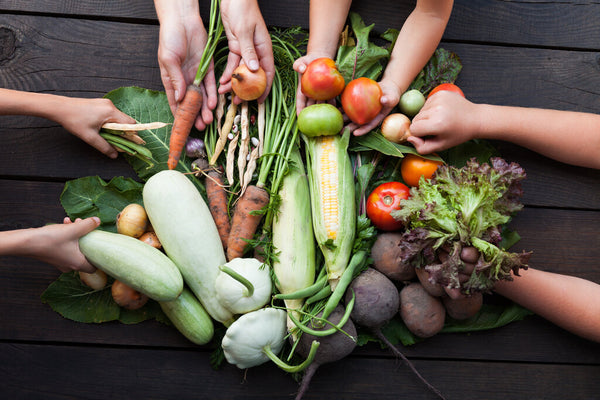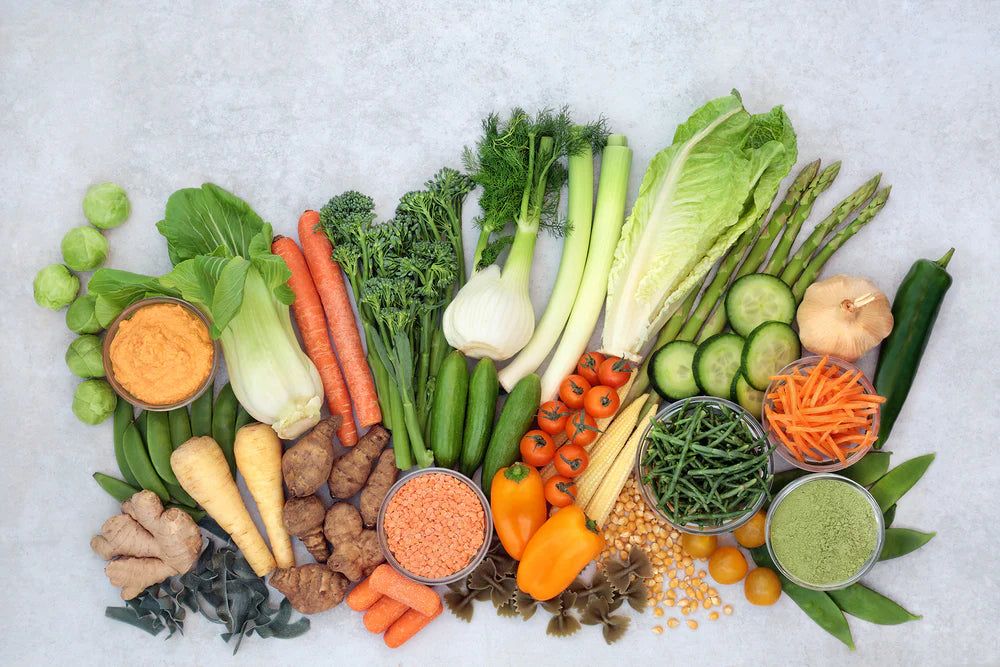In today’s world, creating a sustainable eating plan is not only a smart choice for personal health but also an essential step toward preserving the planet. Sustainable eating involves making mindful food choices that are environmentally friendly, ethically sound, and nutritionally balanced. By adopting this approach, you can contribute to a healthier future for both yourself and the environment. Here’s how you can build a sustainable eating plan tailored to your lifestyle and values.
1. Understand Sustainable Eating

Before diving into the steps, it’s crucial to understand what sustainable eating entails. A sustainable eating plan prioritizes:
- Environmental Impact: Choosing foods with a lower carbon footprint, such as plant-based options.
- Ethical Practices: Supporting fair labor practices and humane treatment of animals.
- Health Benefits: Opting for whole, minimally processed foods that provide essential nutrients.
By incorporating these principles, you can ensure that your diet supports global sustainability efforts while promoting your well-being.
2. Embrace Plant-Based Eating

One of the most effective ways to reduce your environmental impact is to incorporate more plant-based foods into your diet. This doesn’t mean you need to become vegan overnight; even small changes can make a significant difference.
- Start with Meatless Mondays: Dedicate one day a week to plant-based meals.
- Explore Protein Alternatives: Try legumes, tofu, tempeh, and nuts as substitutes for animal protein.
- Experiment with Recipes: Discover the versatility of vegetables by trying cuisines that highlight them, such as Mediterranean or Indian dishes.
Reducing meat consumption decreases greenhouse gas emissions and conserves water resources.
3. Choose Seasonal and Local Foods
:max_bytes(150000):strip_icc()/__opt__aboutcom__coeus__resources__content_migration__simply_recipes__uploads__2018__01__january-produce-2019-horiz-6c26d15b93974a2f9a1f281735f5cf39.jpg)
Eating seasonally and locally not only enhances the flavor of your meals but also reduces the carbon footprint associated with transportation and storage.
- Shop at Farmers’ Markets: Support local farmers and gain access to fresh, seasonal produce.
- Learn About Seasonal Foods: Familiarize yourself with fruits and vegetables that thrive in your region throughout the year.
- Plan Meals Around Availability: Base your weekly menu on the produce that’s currently in season.
This practice supports local economies and minimizes environmental impact.
4. Minimize Food Waste

Globally, food waste contributes significantly to environmental degradation. Reducing waste in your kitchen is a key component of a sustainable eating plan.
- Practice Meal Planning: Plan your meals for the week to avoid overbuying.
- Use Leftovers Creatively: Turn leftovers into new dishes, such as soups, stir-fries, or casseroles.
- Compost Food Scraps: If possible, compost your food scraps to enrich soil and reduce landfill waste.
By minimizing waste, you’ll save money and resources while helping the planet.
5. Prioritize Whole and Unprocessed Foods

Choosing whole foods over heavily processed ones benefits your health and reduces environmental impact. Processing and packaging contribute to pollution and resource depletion.
- Focus on Fresh Produce: Include plenty of fresh fruits and vegetables in your diet.
- Opt for Whole Grains: Replace refined grains with whole grains like quinoa, brown rice, and oats.
- Avoid Excess Packaging: Buy in bulk and use reusable containers whenever possible.
Whole foods provide essential nutrients without the environmental cost of heavy processing.
6. Support Ethical Food Practices

Being mindful of where your food comes from is integral to sustainable eating. Ethical sourcing ensures fair treatment of workers and humane treatment of animals.
- Look for Certifications: Seek labels like Fair Trade, USDA Organic, or Certified Humane.
- Research Brands: Choose companies that prioritize sustainability and ethical practices.
- Buy Fair Trade Products: Support fair labor practices by purchasing Fair Trade coffee, chocolate, and other goods.
Your purchasing choices can drive demand for more ethical food production methods.
7. Reduce Single-Use Plastics

The food industry is a major contributor to plastic pollution. By reducing your reliance on single-use plastics, you can make your eating plan more sustainable.
- Carry Reusable Bags: Bring your own bags for grocery shopping.
- Invest in Reusable Containers: Store food in glass or stainless steel containers.
- Avoid Plastic Packaging: Choose products with minimal or biodegradable packaging.
Small changes in packaging choices can significantly reduce waste.
8. Grow Your Own Food

If you have the space and resources, growing your own food is a rewarding way to embrace sustainability.
- Start a Garden: Even a small herb or vegetable garden can make a difference.
- Use Sustainable Practices: Avoid chemical fertilizers and pesticides by opting for organic gardening methods.
- Preserve Your Harvest: Learn to can, pickle, or freeze produce to extend its shelf life.
Home gardening reduces reliance on store-bought produce and ensures freshness.
9. Practice Mindful Consumption

Mindful consumption involves being intentional about what and how you eat. This can lead to healthier choices and less waste.
- Eat Slowly: Savor your meals and listen to your body’s hunger cues.
- Portion Control: Serve reasonable portions to avoid overeating or wasting food.
- Appreciate Your Food: Acknowledge the resources and effort that went into producing your meal.
Mindfulness fosters a deeper connection to your food and its impact on the world.
10. Educate Yourself and Others

The more you know about sustainable eating, the better equipped you’ll be to make informed choices.
- Read Books and Articles: Stay updated on sustainability trends and practices.
- Attend Workshops: Participate in local events or online courses about sustainable living.
- Share Your Knowledge: Encourage friends and family to adopt sustainable habits by sharing tips and recipes.
Spreading awareness amplifies the impact of your efforts.
Benefits of a Sustainable Eating Plan
Adopting a sustainable eating plan offers numerous benefits:
- Improved Health: Whole, nutrient-rich foods support overall well-being.
- Environmental Preservation: Reducing your carbon footprint helps combat climate change.
- Economic Savings: Minimizing waste and growing your own food can lower expenses.
- Ethical Satisfaction: Supporting fair practices and humane treatment brings peace of mind.
By aligning your dietary habits with sustainability, you contribute to a healthier planet and a more equitable food system.
Also read about: How to Prevent Osteoporosis: A Guide for Women Over 40.
CONCLUSION
Building a sustainable eating plan doesn’t require perfection. Start with small, manageable changes and gradually expand your efforts. Remember that every step counts, no matter how minor it may seem. Begin by evaluating your current habits, identifying areas for improvement, and setting achievable goals.
The journey toward sustainable eating is as much about progress as it is about intention. By taking proactive steps, you can create a lasting impact on your health and the environment—one meal at a time.
[Link to a related article “Benefits of a Sustainable Eating Plan”]


Pingback: The Connection Between Sleep and Skin Health.